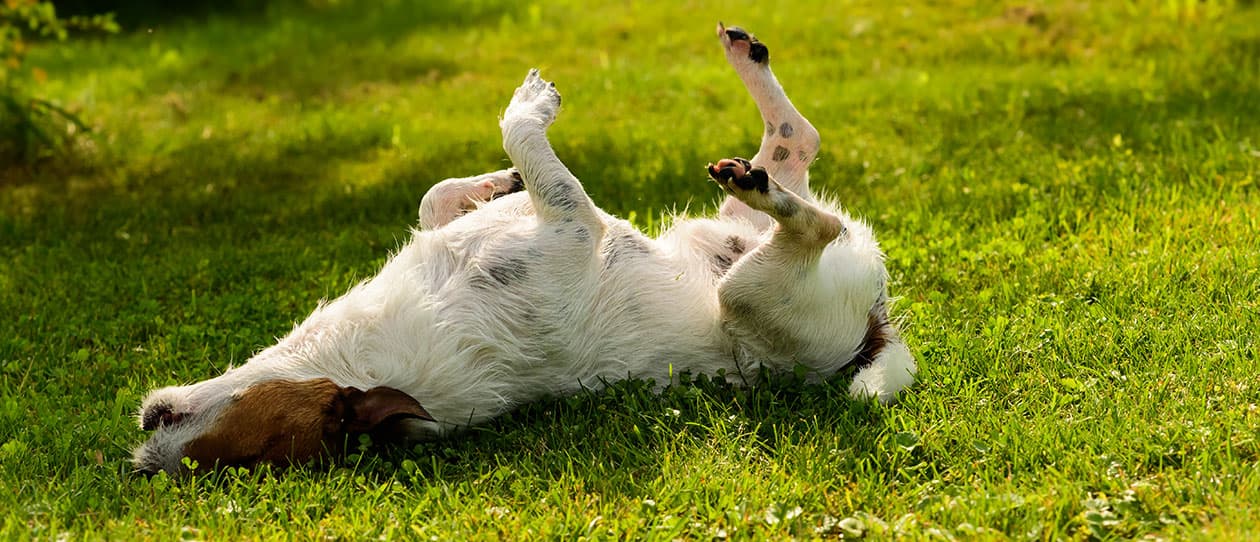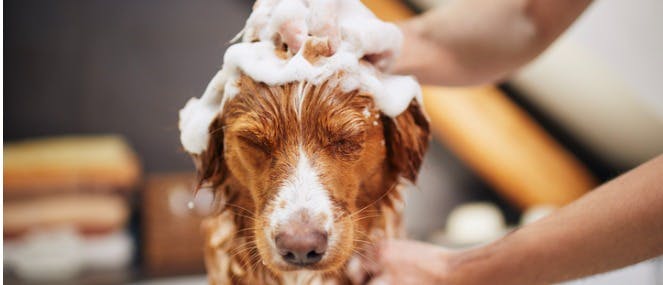
- A Guide To Perfect Your Pet's Health/
- Resources For Your Pet's Skin and Coat Health/
- Treat and Prevent Yeast Infections In Dogs


While it might sound scary to hear your vet say the words Malassezia pachydermatis, this is actually a very common fungus found on your dog’s skin naturally. When offered the conditions to overgrow abnormally, the fungus can lead to an also common dermatological yeast infection, which generally presents itself as inflammation of the skin.
If you see your pooch scratching at red, irritated or flaky skin; discover thickened, rough and darkened skin or hair loss in patches; notice a musty odour; note that your pet is licking its paws excessively; or find a pattern of recurring ear aches – chances are your pet is in discomfort and may have a skin yeast infection.
It’s easy to mistake many of these symptoms with common pet allergies – indeed, sometimes the skin infections are sparked by allergies. But these conditions are managed in very different ways, as allergies themselves are chronic while yeast infections (however started) are usually curable. If you’re unsure about the distinction, it’s a good idea to consult your vet.
What causes yeast infections?
Yeast is natural and normal in both humans and animals. As long as the correct balance is maintained through a healthy immune system, you won’t even notice this part of your bodily function. But sometimes your furry friend can experience a disruption in normal chemistry, weakening defence mechanisms and giving the yeast the chance to overgrow.
This ‘disruption’ may be an increase in skin oils, a food or environmental allergy, hormonal changes or another illness, or due to the antibiotics prescribed to manage any one of these issues – all can compromise your pet’s natural immunity. Shaving fur too close to the skin, or excessive scratching due to fleas and ticks, can also lead to the onset of dermatological yeast infections.
Good news, however: your pet’s yeast dermatitis is not contagious. But it will likely recur unless the underlying cause is treated.
Where do skin infections occur?
Yeast flourishes in the absence of sunlight, which means that while skin infections of this kind can be found anywhere, they’re more common in dark, moist and hard to reach places on your pooch – think inside the ears, in skin folds around the groin, between paw pads, in armpits and on the belly.
Yeast’s fondness for the dark also means that while any dog can develop an infection, some breeds, particularly those with wrinkles and excessive skin, are more genetically predisposed to yeast dermatitis than others, including numerous terrier breeds, dachshunds, cocker spaniels, Shetland sheepdogs, chihuahuas, shih tzus and poodles.
How can you treat your dog's yeast infection?
Once your dog’s yeast dermatitis has been diagnosed (your vet may take a skin swab to examine), a proper course of treatment can be determined – the longer you leave it untreated, the harder it is to cure. Two types of treatments are available: topical and oral. Your vet will advise the more effective option based on the severity of the infection and its location on your pet’s body.
Topical treatment for yeast dermatitis
If the yeast dermatitis is found in your pet’s ears, your vet may prescribe antifungal drops, an ear cleaner or an ointment. If it’s on their skin or paws, or if only a small area is impacted, then antifungal creams, wipes and sprays may be recommended.
Cleaning your dog with an over-the-counter anti-fungal shampoo is also an important part of treating yeast dermatitis, with more regular bathing than normal often suggested (particularly for dogs with oily and greasy skin) until the issue is under control. For any such shampoo to be fully effective, you’ll need to massage it into your dog’s fur and skin, then leave it to work its magic for around five to 10 minutes, before rinsing.
If your dog has particularly oily, waxy or scaly skin, you might need to wash them multiple times, first with a normal shampoo to remove the grease – an impediment to the antifungal shampoo’s effectiveness – then using the more intensive cleansing regimen.
Oral treatment for yeast dermatitis
If your dog’s symptoms are persistent and only seem to worsen, your vet may prescribe oral antifungal medications to treat the yeast infection, as well as antibiotics to target side-effects of yeast dermatitis, like bacterial skin infections. They may also suggest a change in diet, plus the addition of supplements, like Omega-3 fatty acids or probiotics, to your pet’s daily health routine.
How can you prevent yeast infections?
The key to prevention of yeast infections is knowing their underlying cause – that food or flea allergy, the atopic dermatitis, or the chronic health issue diminishing your pet’s immune system. Treating the source will reduce the recurrence – and increase the manageability – of secondary health problems, like yeast dermatitis.
Developing good grooming and pet hygiene habits is also a simple yet effective way to prevent severe yeast infections. Wash your dog regularly, making sure their hair is fully dry afterwards; keep their coats neat and trimmed; clean their ears to get rid of build-up; and get to know your pet’s skin type. If you have a breed particularly prone to yeast dermatitis, you may need to take extra care, regularly washing out ears, skin folds and other dark nooks prone to moisture build-up.
The good news is that the prognosis is positive – once a treatment plan is in place, most dogs see improvements within a week. And if you follow good grooming, hygiene, dietary habits, and management of underlying health issues, chances are your furry friend’s uncomfortable case of yeast dermatitis can be kicked to the curb for good.




